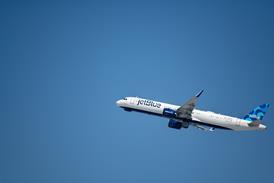Operators of 35 JetStar I and JetStar II business jets in the USA have claimed what they say is a partial victory in their battle to stave off life limits or forced replacement of key components proposed by certification holder Lockheed Martin.
Although operators continue to protest against a proposed rulemaking under way to set life limits on the aircraft's nose landing gear steering cylinder, they say they are encouraged by Lockheed's decision to move post-production support for all its civil certified aircraft, including the JetStar, L-1011 and C130, from the company's Logistics Services facility in Greenville, South Carolina, back to the Lockheed Martin Aeronautics facility in Marietta, Georgia. The company transferred the work to Greenville from Marietta in 2000.
"In Marietta, there are the engineers and technical staff to be able to support the aircraft properly," says Larry Simpkins, a JetStar pilot, mechanic and unofficial spokesman for the operators. Simpkins sees the move, which puts post-production support under the command of Mike Eder, director of the company's design and analysis centre, as beneficial to the long-term survival of the classic four-engine jet. "If it stayed at Greenville, they would have found a way to ground it," Simpkins adds.
The move was confirmed by Lockheed vice-president of engineering Tom Blakely in a letter to Simpkins last month.
Lockheed, through the Greenville facility, has been trying to put life limits on key airframe parts, including the steering cylinder, wing attach bolts, empennage pivot fittings and engine pylon bolts, which it says is necessary based on the parts' failure history. Replacement costs for the steering cylinder are $14,876.57 per aircraft, says Lockheed.
Operators largely reject the airframer's safety assertions, however, and say special inspections will suffice, particularly in the case of the nose wheel component.
Source: Flight International























